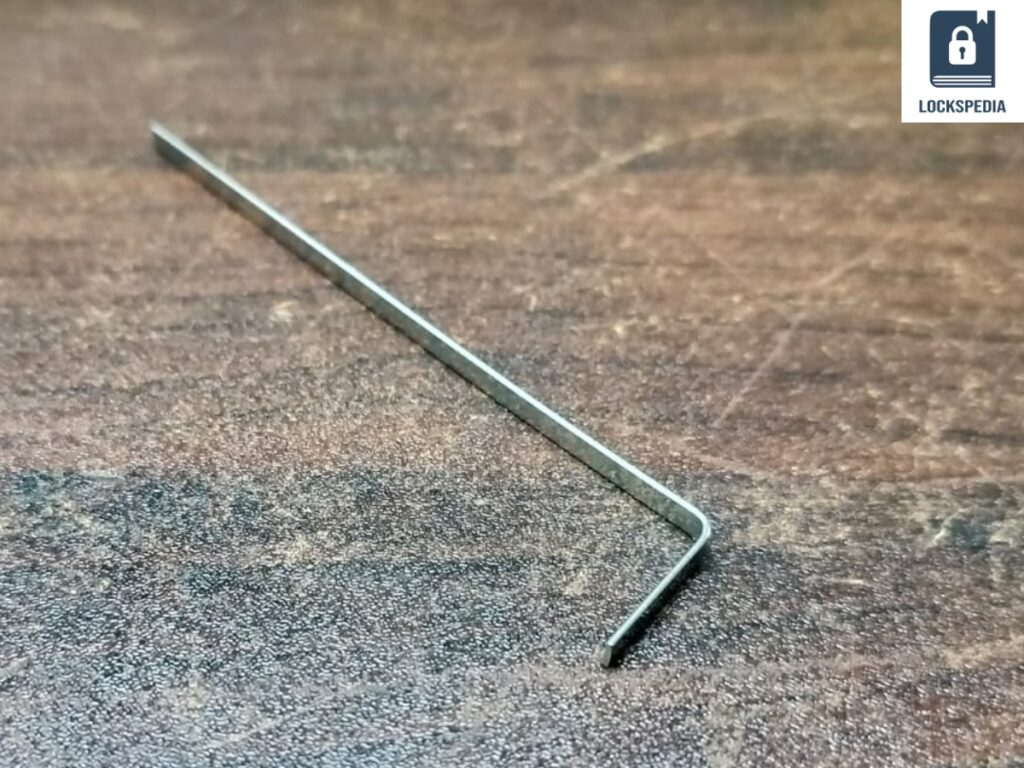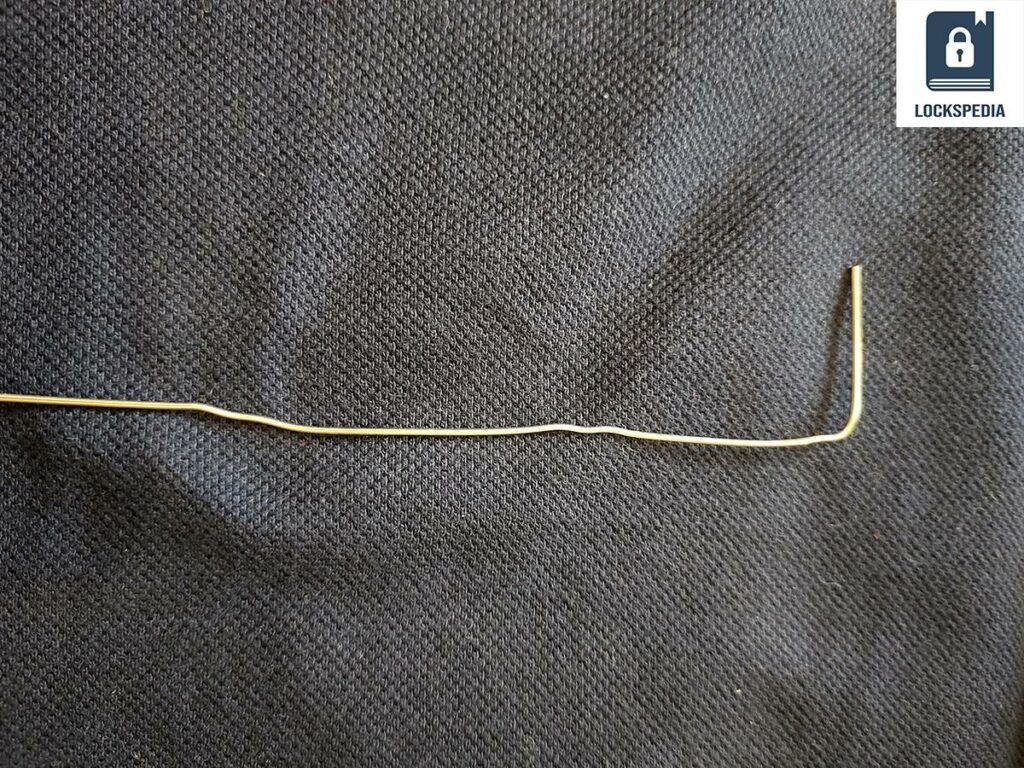Lockpickers are never happy with the status quo and are always looking to push forward the existing boundaries. Once we learn how to pick locks with standard pins, we want to pick security pins. Once we learn how to deal with security pins, we want to pick a lock without a tension wrench.
Such is our thirst for knowledge and zeal to become better everyday. And there is only one way to quench that thirst; by learning new ways to pop open a lock.
In this guide, we are going to learn how to pick a lock without a normal tension wrench. We will also delve into the limitations of these methods. For the sake of this article, we will keep the focus to pin tumbler locks and single pin picking (SPP). But let’s start off with why tension wrench is so important in lockpicking.
What Role Does a Tension Wrench Play in Lockpicking?

A tension wrench (or any tensioning tool) provides rotational torque to the plug that stops the pins from falling back due to springs thereby helping the picker to set the pins. It is undoubtedly the most important tool in your lockpicking kit.
Tension wrenches (or any other tensioning tool) perform 3 mains functions in lockpicking –
- Binding the pins – The Most Important
- Transmit the feedback – Supplementary
- Rotate the plug to open the lock – Supplementary
Binding the Pins
In a pin tumbler lock, spring loaded pins obstruct the plug from moving freely in the housing thereby locking the lock.

When a tension wrench is inserted and twisted to provide torque to the plug, one or the other pin get trapped (binded) between the plug and the housing. This trapped pin (known as binded pin) is responsible for locking the lock. Our aim as lockpickers is now to set this binded pin to the sheer line through a lock pick.
Once this binded pin is set, the plug will rotate a small bit thereby binding the next pin in the binding order and so on.
Tension wrenches do 2 crucial functions at this step –
- Helps us determine the binding order of the pins
- Keeps the set pin in place otherwise it will fall back to its original position due to force exerted by the springs.
I am sure you can see and visualize now how important is tension wrench in the whole process of lockpicking.
Transmit the Feedback
All of us know that lockpickers are a clueless bunch in the absence of feedback from the lock. Though we gather feedback from lock picks but none provides a better unadulterated feedback than tension wrenches.
Tension wrenches are true servants of the craft that transmit every click, every rotation, every vibration in the lock to the lockpicker.
Plug Rotation to Open the Lock
Once all the pins are set at the sheer line, the plug is free to rotate in the lock housing thereby pop opening the lock. A tensioning tool comes in handy here as well as it rotates the plug.
How is It Possible to Open a Lock Without a Tension Wrench?
I am sure you would be wondering if a tension wrench carries out all these functions, then how it is possible to even think of opening a lock without it.
Well, the answer is to create a DIY lock pick tension wrench. You can’t do away with the concept of tensioning; however what you can do is create your own tension wrench instead of a normal one.
Opening a Lock Without a Tension Wrench
So we have learnt that tension wrench is essential to open a pin tumbler lock in single pin picking style.
We have also seen that if we don’t have a normal tension wrench, then the only solution left for us is to make our own tension wrench. Let’s see what all materials can be used to make our DIY tensioning tool.
Best Materials for Making DIY Tension Wrench
Theoretically you can make a tension wrench from a lot of materials but in my experience, these materials are best suited –
- Wiper blade insert
- Paperclip
- Bobby pin
| Material | Positive | Negative |
| Wiper Blade Insert | The Most durable (steel) & effective with dimensions of your own choice | Expensive as compared to other options |
| Paperclip | Fast and Easy without any special tools | Limited capabilities |
| Bobby Pin | Fast and Easy without any special tools | Limited capabilities |
It is mentioned online that coat hangers, bra wire, knife and screwdrivers can also be used to make tension wrenches but since I have not done it myself, I can’t commit anything.
I find it much easier to make a DIY lock pick tension wrench from a paperclip if I don’t have anything else.
Steps to Create Tension Wrench
- Hold one end of the material (wiper blade insert or paperclip) with a plier. If it is wiper insert, heat the other end with a propane torch.
- Once the other end becomes red hot, bend it 90 degrees using another plier. If the base material is paperclip, just bend the other end by 90 degrees.
- Immediately soak it in water to steam off the heat
- If the edge is rough, use a sandpaper or nail filer to smooth it out
- Your own DIY tension wrench is ready now.

Test the Tension Wrench
It’s time to test that tension wrench now. However before we do that, there are a couple of things that we need to keep in mind with this DIY tension wrench.
- The binding force that this homemade tension wrench will exert will depend a lot on the base metal. Therefore, you might have to readjust the amount of tension applied.
- The feedback will not be consistent and might be muted as well. This will definitely hamper our lockpicking and will surely test our patience.
My recommendation to overcome these challenges are –
- Keep a truck load of patience and spend from it miserly.
- Start by applying light tension to the lock and then slowly increasing the tension till you feel the first pin binding.
- Start with a relatively easy lock with no security pins like Master Lock 140d.
- Practice, Practice & Practice!
Limitations
When picking a lock without a tension wrench, we must also account for the limitations. In this section, I will highlight some of the challenges that I faced whenever I tried to pick a lock without a formal tensioning tool.
Dealing with Security Pins
With the exception of the tension wrenches made from wiper inserts, I found that none were good against dealing with security pins. I was not able to pick up the feedback of a false set.
Picking Different Types of Locks
Tension wrenches made from paperclips or bobby pins have their serious limitations when it comes to picking various types of locks due to size and force exerted. I have mentioned some of these mistakes with tension wrench in this article.
Therefore, it is prudent to check the kind of the lock before jumping onto making your own tension wrench.
Frequently Asked Questions
What steps should be followed to pick a small lock effectively?
To pick a small lock, you should first insert your makeshift pick to feel for the pins. Then, carefully press and lift each pin until it sets, working from front to back. Apply continuous, light rotational pressure as if using a key.
Apart from a tension wrench, what are other tools that can be used for lock picking?
Other tools for lock picking include picks of various shapes (like hooks or rakes), pick guns, or bump keys. Each tool serves a different purpose in manipulating the lock mechanism to open without a tension wrench.
